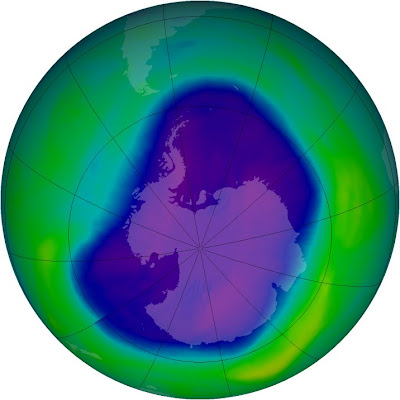

The ozone layer prevents most ultraviolet (UV) and other high-energy radiation from penetrating to the earth's surface but does allow through sufficient ultraviolet rays to support the activation of vitamin D in humans.
The full radiation, if unhindered by this filtering effect, would destroy animal tissue. Higher levels of radiation resulting from the depletion of the ozone layer have been linked with increases in skin cancers and cataracts and have been implicated in the decline of certain amphibian species
Minimum ozone levels in the Antarctic decreased steadily throughout the 1990s, and less dramatic decreases have been found above other areas of the world. In 2000 (and again in 2003 and 2006) the hole reached a record size, extending over more than 10.5 million sq mi (27 million sq km), an area greater than that of North America. In 1987 an international agreement, the Montreal Protocol, was reached on reducing the production of ozone-depleting compounds.
Revisions in 1992 called for an end to the production of the worst of such compounds by 1996, and CFC emissions dropped dramatically by 1993. Recovery of the ozone layer, however, is expected to take 50 to 100 years. Damage to the ozone layer can also be caused by sulfuric acid droplets produced by volcanic eruptions.

No comments:
Post a Comment